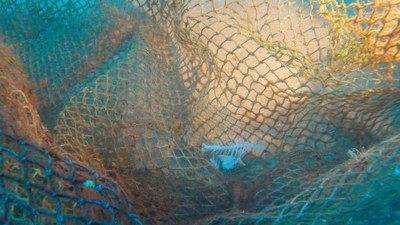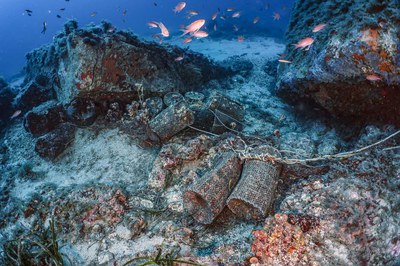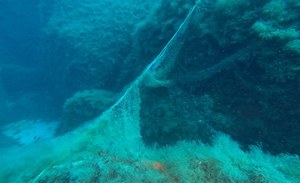PNRR MER: ISPRA launches sea ghostbusters to capture ghost nets and save marine flora and fauna
Description
There is a silent and often invisible threat that lurks among the waves: these are the so-called "Ghost Nets", the "ghost nets" used for fishing that are abandoned or lost at sea and represent one of the most insidious forms of pollution marine. As part of the project MER (Marine Ecosystem Restoration) financed by the PNRR, ISPRA has started the procedures to clean the water from this equipment in 20 sites along the Italian coasts of Liguria, Tuscany, Lazio, Campania, Sicily, Puglia, Marche , Emilia-Romagna and Veneto. The plan, which includes the removal, collection, transport, disposal and recycling of "ghost nets" will continue until 30 June 2026.
The invisible threat
ISPRA data shows that 86.5% of waste at sea is linked to fishing and aquaculture activities and 94% of these are abandoned nets, some even kilometers long. The “Ghost Nets” are extremely dangerous: the Posidonia oceanica meadows are damaged due to the physical effect of the shading and mechanical abrasion of the seabed which kills and tears the plants, many species are suffocated due to the excessive accumulation of sediments. Animal species also suffer damage because fishing gear lost at sea continues to catch millions of fish, mammals, turtles, large cetaceans and even birds in a non-selective and indiscriminate way, without human control, thus also affecting threatened and at-risk species . Once trapped by the ghost nets, they are unable to move, dying from starvation, infections and lacerations. It is estimated that ghost nets alone catch around 5% of the world's marketable fish.
As if this were not enough, the nets represent a new source of pollution: if once, in fact, they were made with hemp or cotton, today synthetic fiber deriving from plastic is the main material used, which takes hundreds of years to decompose . The nets suffocated much of the fauna present, not to mention the corals, which were seriously damaged. Furthermore, due to their adherence to the rocks, the fishing nets close every possible refuge for the fish, which are thus forced to move. They then contribute significantly to pollution from microplastics which, with their load of contaminants, can be ingested by marine organisms and enter the food web, reaching humans
The “Ghostbusters of the Seas”
This is why the Institute has already started monitoring activities to precisely identify the critical sites for the removal of these objects and preserve the local flora and fauna: a procedure that will involve a team of "Ghostbusters of the seas": highly specialized divers and wire-guided underwater robots (ROVs) with mechanical arms to cut, manipulate and remove nets at depths greater than 40 meters in compliance with a rigorous safety plan. This is not a simple cleaning, but a precise and meticulous intervention, similar to the restoration of a painting, which carefully evaluates the conditions of each site to minimize damage to animal and plant communities and maximize the recycling of recovered plastic. A fundamental step for cleaner and more sustainable seas, free from the threats of ghost nets and protected in their biodiversity.



